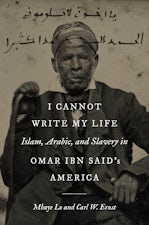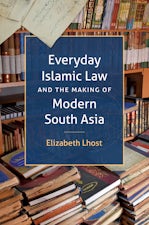Sufis and Saints' Bodies
Mysticism, Corporeality, and Sacred Power in Islam
By Scott Kugle
368 pp., 6.125 x 9.25, 9 illus., 4 figs., 1 map, notes, bibl., index
Not for Sale in South Asia
-
Paperback ISBN: 978-0-8078-5789-2
Published: March 2007 -
E-book EPUB ISBN: 978-0-8078-7277-2
Published: September 2011 -
E-book PDF ISBN: 979-8-8908-8122-9
Published: September 2011
Islamic Civilization and Muslim Networks
Buy this Book
- Paperback $50.00
- E-Book $29.99
Sufis and Saints' Bodies focuses on six important saints from Sufi communities in North Africa and South Asia. Kugle singles out a specific part of the body to which each saint is frequently associated in religious literature. The saints' bodies, Kugle argues, are treated as symbolic resources for generating religious meaning, communal solidarity, and the experience of sacred power. In each chapter, Kugle also features a particular theoretical problem, drawing methodologically from religious studies, anthropology, studies of gender and sexuality, theology, feminism, and philosophy. Bringing a new perspective to Islamic studies, Kugle shows how an important Islamic tradition integrated myriad understandings of the body in its nurturing role in the material, social, and spiritual realms.
About the Author
Scott A. Kugle is author of Rebel between Spirit and Law: Ahmad Zarruq and Juridical Sainthood in North Africa. He lives in India.
For more information about Scott Kugle, visit
the
Author
Page.
Reviews
"A superb scholarly work which is animated by a passionate sympathy for the world it studies."--Muslim World Book Review
"Groundbreaking and sets a high standard for any future work on the topic. . . . A milestone in the comparative study of Sufi traditions and a major contribution to the field of religion and the body."--Journal of the American Academy of Religion
"[An] intriguing, well-researched book. . . . Highly recommended."--CHOICE
"A brilliant and important book."--Elixir
"Glistening with the author's immense learning and passion for the material and his clear linguistic and historical expertise in the Muslim literatures of the pre- and early modern Arab and Indo-Persian worlds. . . . This book is truly a joy to read. . . . Essential reading for scholars of premodern and contemporary Islam alike."--Journal of Religion
“A magnificent work manifesting all the features of a morally engaged scholarship: an intimate embrace of the human body within a kind of ‘muted universalism’; a powerful focus on transgressive Sufi saints as countercultural actors; a radical queering of all those potentially violent and finally unbelievable binarisms (male/female, sexuality/spirituality, orthodox/heterodox); and a constant widening of the analysis into the comparative erotics of mystical literature in both the Christian West and Hindu South Asia. Many a reader will find real hope, and real heart, here. I certainly did.”--Jeffrey J. Kripal, author of Roads of Excess, Palaces of Wisdom: Eroticism and Reflexivity in the Study of Mysticism




